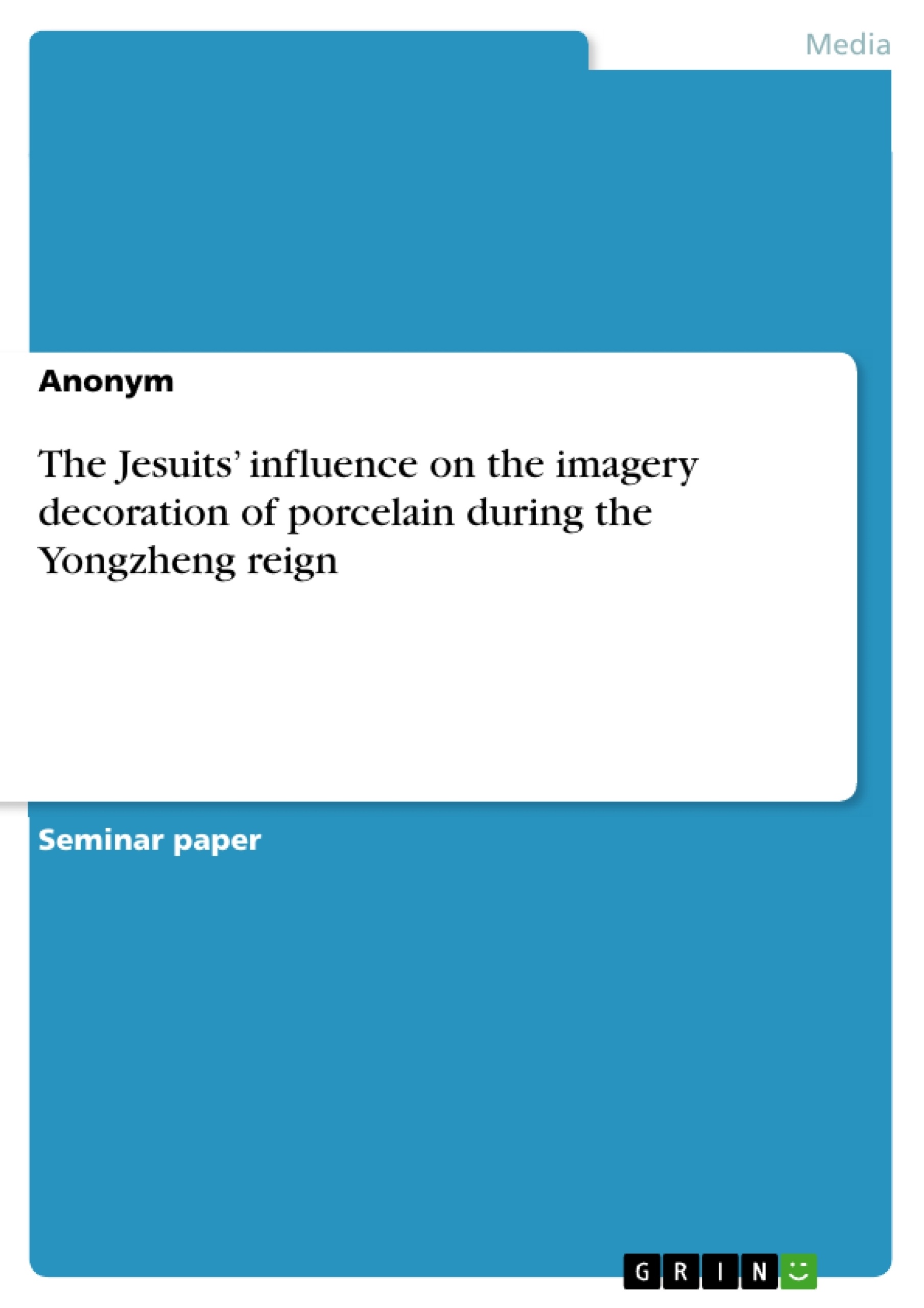This paper examines the cross-cultural impact of Western styles on Chinese porcelain decoration, which not only aimed at a Western clientele but was produced for the local market and commissioners as well.
In the eighteenth century during the Yongzheng reign (1723–1735) of the Qing dynasty (1644–1911) European Jesuits became part of Beijing’s court life and contributed to the imperial Chinese art scene. Their Western style influenced Chinese contemporaries and initiated changes in the decoration of porcelain produced for the emperor and his court. While the Jesuits who worked as artists at the court often picked up on Chinese narratives their artistic approach differed from their Chinese colleagues and resulted in new artistic manners and themes. Meanwhile, the trade with Europe flourished and contributed to the Chinese’s growing interest in European objects. This Occidentalism was the Chinese counterpart to Europe’s affinity with the Far East and likewise influenced the Chinese decoration on porcelain. This essay aims to examine the extent to which the Jesuits’ work at the court and their European training influenced the imagery decoration on imperial porcelain and to which extent the stylistic changes resulted from the Jesuits’ presence or from the side effect of the trade with Europe in the eighteenth century. First, it is important to understand the decorative manner of imagery themes before the Jesuits’ pronounced presence in the late seventeenth and early eighteenth century. Further, the essay attempts an overview on the artistic characteristics of the Jesuit art produced for the Qing court compared to the decoration on export ware for Europe. This section is followed by a stylistic analysis of four imperial porcelain wares of the Yongzheng period from the Percival David Collection and an examination of the visual influences that are found in their decoration. Finally, the essay summarises the analytical study and concludes with the consequential response to the essay’s question.
Table of Contents
- The Jesuits' Influence on the Imagery Decoration of Porcelain during the Yongzheng Reign
- The Decorated Style of Porcelain before the Jesuits’ Pronounced Presence
- The Artistic Characteristics of Jesuit Art for the Qing Court Compared to Export Ware for Europe
- The Visual Influences of Four Imperial Porcelain Wares of the Yongzheng Period
- Jesuits at the Qing Court
- The Flourishing Trade with Europe and Its Impact on Porcelain Decoration
Objectives and Key Themes
This essay examines the influence of European Jesuits and the trade with Europe on the imagery decoration of imperial porcelain during the Yongzheng reign of the Qing dynasty. It analyzes the artistic characteristics of Jesuit art produced for the Qing court compared to export ware for Europe and examines the visual influences found in the decoration of imperial porcelain wares of the Yongzheng period. The essay aims to understand the extent to which the Jesuits' work at the court and their European training influenced the imagery decoration on imperial porcelain and to what extent the stylistic changes resulted from the Jesuits' presence or from the side effect of the trade with Europe in the eighteenth century.
- The influence of European Jesuits on the imagery decoration of imperial porcelain during the Yongzheng reign
- The comparison of the artistic characteristics of Jesuit art produced for the Qing court and export ware for Europe
- The visual influences found in the decoration of imperial porcelain wares of the Yongzheng period
- The impact of the flourishing trade with Europe on the decoration of porcelain during the Yongzheng period
- The role of Western motifs and artistic approaches in the evolution of Chinese porcelain decoration
Chapter Summaries
- The Jesuits' Influence on the Imagery Decoration of Porcelain during the Yongzheng Reign: This chapter examines the stylistic changes in porcelain decoration during the Yongzheng reign, comparing the earlier, more traditional Chinese style with the new, more realistic and Western-influenced approach. It analyzes the influence of Jesuit artists and the trade with Europe on the decoration of imperial porcelain.
- Jesuits at the Qing Court: This chapter explores the role of Jesuits at the Qing court, particularly during the Yongzheng period. It discusses the contributions of Jesuits to the artistic and technical advancements at the court, including the introduction of new colors and techniques in porcelain decoration. The chapter also analyzes the artistic style of Jesuit artists at the court, comparing it with traditional Chinese styles.
- The Flourishing Trade with Europe and Its Impact on Porcelain Decoration: This chapter examines the impact of the flourishing trade with Europe on the decoration of porcelain during the Yongzheng period. It analyzes the growing demand for European objects and the influence of European motifs and designs on Chinese porcelain. The chapter also discusses the role of export ware and its distinct European decoration in shaping the Western style on Chinese porcelain.
Keywords
Key terms and concepts discussed in this essay include: Yongzheng reign, Qing dynasty, Jesuits, imperial porcelain, imagery decoration, Western influence, Chinese art, export ware, famille rose palette, linear perspective, naturalistic style, European motifs, trade with Europe, artistic fusion.
- Arbeit zitieren
- Anonym (Autor:in), 2015, The Jesuits’ influence on the imagery decoration of porcelain during the Yongzheng reign, München, GRIN Verlag, https://www.grin.com/document/506780



